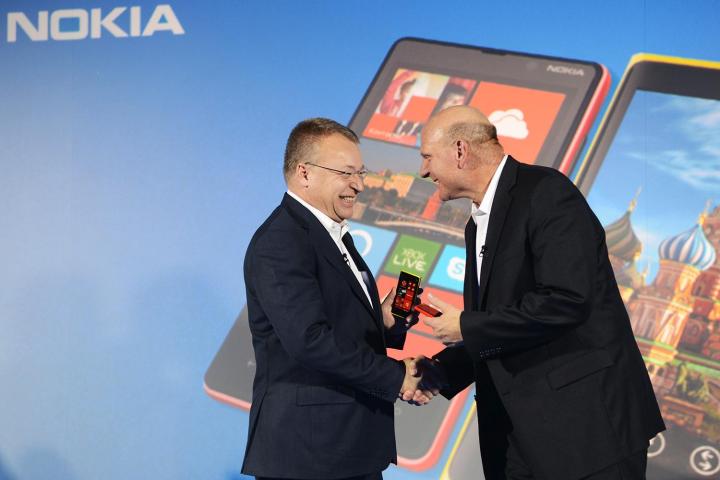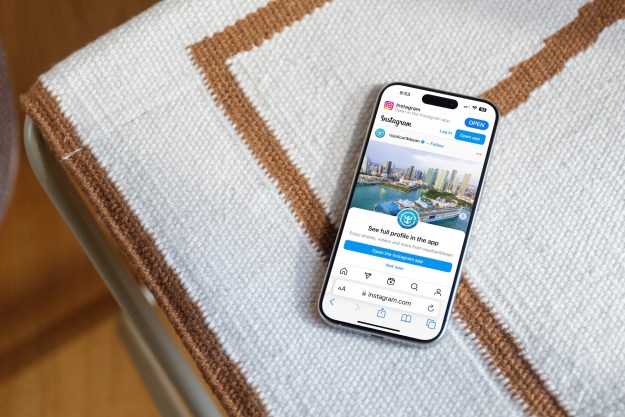
From now on, it’s Nokia: A Microsoft company. Microsoft has spent a little more than $7 billion to purchase Nokia’s Devices and Services division. It’s an unusual piece of news. Though many will say the sale was inevitable, and such a move had been rumored for some time, it still has far reaching consequences for the industry, and it’s the end of the company which in all likelihood, sold many of us our first phone a decade or more ago.
It’s by no means the first acquisition of its type we’ve seen, and the monetary value pales in comparison to the $130 billion Verizon/Vodafone buyout on Sept. 2.
Old Nokia feature phones regularly turn up on favorite phone lists and Symbian phones like the Nokia N95 paved the way for the hardware we love today. It’s the end of an era, and while we could wax lyrical on Nokia’s impact on our lives and the mobile industry, what does this new chapter in its life mean for it, Microsoft, and us?
Microsoft gets all of Nokia’s phones, and 10 years of patents
Microsoft spent a total of $7.2 billion for Nokia’s assets. The first $5 billion of that went toward Nokia’s Devices and Services division, including the Lumia brand name. As for the Nokia name, it’s Microsoft’s to use on existing mobile phones. The remaining $2.18 billion covers a non-exclusive, 10-year license for Nokia’s extensive patent portfolio. In deals like this, the patents are often key, and Microsoft will gain 8,500 design-related patents, and 30,000 utility patents and related applications.
Microsoft will also get Stephen Elop back. He joined Nokia as CEO back in 2010, and was instrumental in signing the original deal in 2011 for Nokia to use Windows Phone on its smartphones. Early next year, he will rejoin Microsoft and head up the newly expanded Devices division. Other Nokia executives will join him, including Jo Harlow, a regular at Nokia’s recent press conferences. She will retain her role as head of Smart Devices.
It won’t get Nokia’s top VP of Design, Marko Ahtisaari, though. He has confirmed he’ll leave Nokia in November. Ahtisaari has overseen the look of Nokia’s Lumia phones since the start.
Perhaps most importantly, Microsoft will make more money from sales of Windows Phones than ever before. Before the deal, Microsoft made around $10 for each Nokia Windows Phone handset sold, but the profits were in the region of $40 for each device, plus Microsoft was paying Nokia a fee for its continued support. Now the two companies are one and the same, all that money goes to Microsoft.
Nokia will still remain, but it won’t make phones
Nokia will still exist as a tech company and will continue with three main lines of business.
- Network infrastructure: Nokia has a healthy network infrastructure business after buying out Siemens share in Nokia Siemens Networks earlier this year.
- Here Maps: Nokia will retain its mapping and location services businesses. That means Here Maps will not be a Microsoft product and Nokia will remain free to work on integrating it into cars, as was recently announced. Microsoft has licensed Here Maps for the next four years.
- Technology development: Nokia will continue to develop technologies that it will patent and sell/license to others.
32,000 of 88,000 Nokia employees will work for Microsoft
Nokia employs 88,000 people, and 32,000 will become Microsoft employees once the deal is complete, including 4,700 currently located in Finland.
Current CEO Stephen Elop – who if you believe the conspiracy theorists, has completed his Manchurian goal and devalued Nokia to a point where Microsoft could swoop in and purchase it – is stepping down from his role to head back to the mothership. This means both Nokia and Microsoft will be looking for new CEOs, with Elop himself being linked to the Microsoft job. Nokia has put current Chairman of the Board Risto Slilasmaa in place as interim CEO.
Microsoft is now a feature phone manufacturer
Microsoft wants Windows Phone to succeed, and sees its own hardware division as essential to making it happen, so the deal is primarily about the smartphone OS. However, the Series 30 and Series 40 operating systems are also included with Windows Phone, so Microsoft also gets its own feature phone software.
Series 40 powers Nokia’s Asha brand of phones, which includes Windows Phone-like touchscreen devices, and more traditional phones such as the recently announced Nokia 515. These low-end, and therefore competitively priced, phones could help Microsoft dig further into valuable expanding markets ripe for Windows Phone in the future.
But to do this, Microsoft may want to link the Asha and Lumia brands together in a coherent way, so the Asha name may disappear in the near future, and be replaced with something involving Windows or the Lumia name.
No new ‘Nokia’ Windows Phones are coming
According to the fine print, the Nokia brand name is still Nokia’s, but it cannot license it for use on any mobile phones for 30 months, and won’t be able to use the name on its own mobile devices until December 31, 2015.
Microsoft has the rights to use the Nokia name on all current smartphones, such as the Lumia 1020, for the next 10 years, but it cannot make new Windows Phone devices with the Nokia name. It can also use the Nokia brand name on any Asha or Series 30 series, either those already on sale or ones developed in the future. This means that the Nokia name will live on, but only as long as the current range of Lumia phones remain on sale, or should Microsoft chose to use it on future feature phones. It may make sense to continue using the Nokia brand for a few years because of how widely recognized it is in developing countries where inexpensive Asha phones are popular.
Nokia could make phones in the future, but it’s unlikely
Does this mean the dream of a Nokia-produced Android phone has finally died? Well, it’s certainly dead for the next few years. Nokia can’t use its name on any mobile product until the end of 2015 and Microsoft owns the Lumia name and just purchased Nokia’s entire infrastructure for building phones. After 2015, who knows, but it seems unlikely Nokia will want to return to producing mobile hardware after selling of everything it needs to do so.
Prepare for Skype phones, Lumia tablets, and an Appley Microsoft
Now that Microsoft has the Lumia brand, it will likely assimilate it into its family of brands. This could mean we’re going to see plenty of brand cross over from Microsoft. Skype phones, the Lumia name on future Surface tablets (as that name has plenty of stigma already attached), and further integration of smartphones with Xbox. Gesture control systems could be branded Kinect, and the Lumia name could be added to absolutely anything mobile-related, from cloud storage to a new range of music players. Instead of replacing all Zune branding with Xbox, Microsoft now has another option.
With an entire phone business under its control, Microsoft can fully devote itself to its own platform. It can micro-manage everything in-house, and occasionally use this as leverage against wayward hardware partners, to whom it’s no longer reliant. If this sounds familiar, it’s the same tactic we see from Microsoft’s long-term rival, Apple.
The Nokia/Microsoft deal still has to be approved by Nokia’s board of directors, and by the usual regulatory bodies too. If all goes well, then the sale will be completed before the end of March next year.




